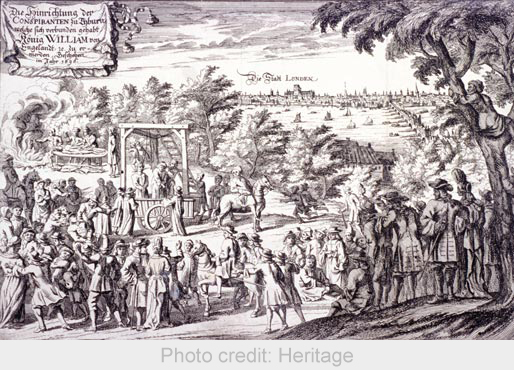Source: Cabot Specialty Fluids Limited
The oil derrick is an industry ‘symbol’ typifying oilfields the world over. We’ve all seen them, but have you ever wondered how they got their name?
Derrick originated as a given (first) name in English and is derived from the Dutch “Diederik”, meaning ‘chief of the people’. There’s a certain irony in this, as the man who devised the first derrick was an Elizabethan Englishman by the name of Thomas Derrick, one of the country’s most famous hangmen. Not a popular profession at the time due to the threat of reprisals, many had to be coerced into the role. Derrick was convicted of rape and risked execution when Robert Devereux, the 2nd Earl of Essex, pardoned him on the condition that he become hangman at Tyburn, near the current location of Marble Arch in London.
Not content with the traditional rope over the beam method he invented a new structure using a movable beam and pulley system, and lent this new invention his name. Consequently, ‘derrick’ became synonymous with the support frame for the hangman’s noose from the 1600s and through general usage to cranes and derricks of today.
Derrick executed over 3,000 people during his prolific career, one of the most notable being his own pardoner, the Earl of Essex, for a botched coup d’état against the government of the day. Now there’s thanks for you.

